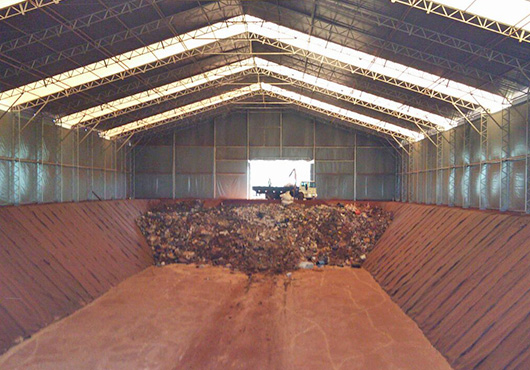Classe I landfills receive hazardous waste. In the end, not everything can be dumped in common sanitary landfills (known as class II, nonhazardous). Due to the risks involved in the disposal of waste in class I landfills, there are even more controls in place, with a view to preventing contamination of the air, water and soil, through the use of specific protocols.
Hazardous waste can be flammable, corrosive, reactive, toxic and pathogenic, and is normally generated by industrial activities.
It is laid out in trenches, normally covered, on top of an impermeable layer of clay, bentonite geocomposite, high-density polyethylene (PEAD, 2 mm) membrane, geotextile, geogrid, drainage layer (sand) and an overflow drain. Another impermeable layer is then laid down consisting of another sequence of membrane, geotextile, geogrid, geotextile drainage layer and overflow drain, membrane, drainage layer and leachate drain.
After the trench is completed, it is closed. They are covered in clay, another PEAD membrane, plant soil and, finally, landscaping with native species. Wells are used to monitor leachate from the landfill for Classe 1 hazardous waste. In this way, all the pollutants that could enter the environment are contained and, subsequently, treated.
Estre follows all environmental regulations in its landfills and the transport of waste. The company also manages the necessary licenses, offering the client the best service from origin to destination.

Região sul: comercialsul@estre.com.br
São Paulo (capital e interior): comercialspi@estre.com.br
Demais regiões: comercial@estre.com.br


